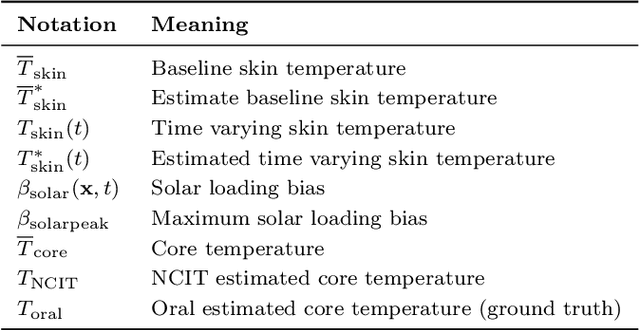Ellin Q. Zhao
Making Thermal Imaging More Equitable and Accurate: Resolving Solar Loading Biases
Apr 18, 2023



Abstract:Thermal cameras and thermal point detectors are used to measure the temperature of human skin. These are important devices that are used everyday in clinical and mass screening settings, particularly in an epidemic. Unfortunately, despite the wide use of thermal sensors, the temperature estimates from thermal sensors do not work well in uncontrolled scene conditions. Previous work has studied the effect of wind and other environment factors on skin temperature, but has not considered the heating effect from sunlight, which is termed solar loading. Existing device manufacturers recommend that a subject who has been outdoors in sun re-acclimate to an indoor environment after a waiting period. The waiting period, up to 30 minutes, is insufficient for a rapid screening tool. Moreover, the error bias from solar loading is greater for darker skin tones since melanin absorbs solar radiation. This paper explores two approaches to address this problem. The first approach uses transient behavior of cooling to more quickly extrapolate the steady state temperature. A second approach explores the spatial modulation of solar loading, to propose single-shot correction with a wide-field thermal camera. A real world dataset comprising of thermal point, thermal image, subjective, and objective measurements of melanin is collected with statistical significance for the effect size observed. The single-shot correction scheme is shown to eliminate solar loading bias in the time of a typical frame exposure (33ms).
 Add to Chrome
Add to Chrome Add to Firefox
Add to Firefox Add to Edge
Add to Edge